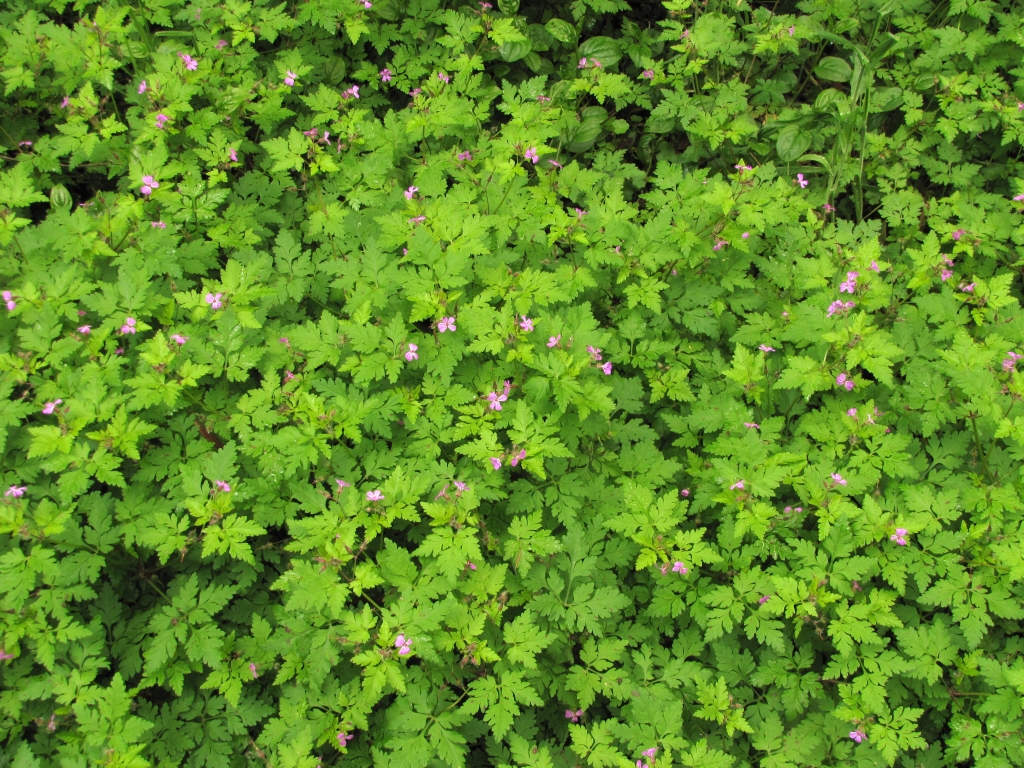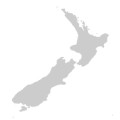Geranium robertianum
L. Herb RobertMalodorous, erect to decumbent annual or biennial to 40 cm high; lower stems usually reddened, with shiny, glandular and eglandular hairs, upper stems glabrescent; taproot slender. Leaves ovate to broad-ovate, 2–8 cm long, deeply palmatisect to ternately compound with 3–9 (bi)pinnatisect primary lobes; ultimate lobes obtuse to acute; upper surface with scattered hairs; stipules c. ovate, margin ciliate. Flowers paired; peduncles to 7 cm long; pedicels to 1 cm long, minutely glandular-pubescent with scattered coarse glandular hairs; sepals ovate to narrow-lancolate, 5–7 mm long, with long spreading and minutely glandular hairs, mucro c. 1 mm long; petals obovate to spathulate, 9–12 mm long, truncate to slightly retuse, deep pink; anthers orange to purple, pollen orange. Fruit 13–22(–30) mm long; mericarps glabrous to hirsute except for long hair-like strands near awn attachment, strongly wrinkled; seeds smooth. Flowers Sep.–Jan.
VVP, GipP, HSF, OtR. Also naturalised in SA, NSW. Native to Europe, Africa, Asia. A fast-growing, self-seeding ornamental, widely grown in rockeries etc. Noted as a garden-escape (e.g. the Otway and Dandenong Ranges, Inverloch) but likely to be more widely naturalised.
Smith, L.P. (1999). Geranium. In: Walsh, N.G.; Entwisle, T.J., Flora of Victoria Vol. 4, Cornaceae to Asteraceae, pp. 219–233. Inkata Press, Melbourne.
 Spinning
Spinning

